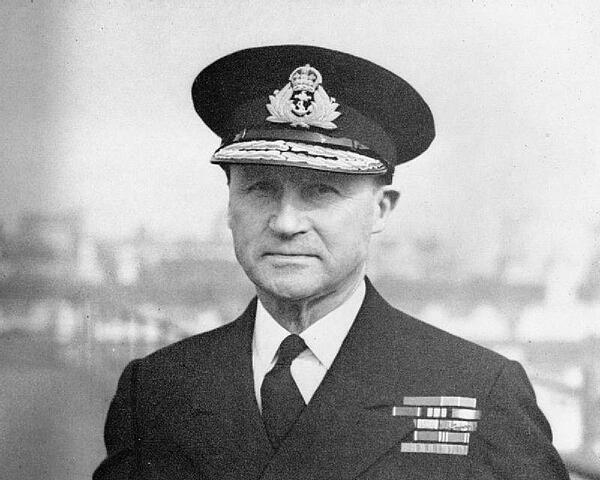Admiral Sir Bertram Ramsay
Admiral Sir Bertram Ramsay was an important naval figure in World War Two; he was highly influential in the planning stages of the Dunkirk Evacuation, the allied invasion of Sicily and the D-Day landings.
Born in 1883, Bertram Ramsay was out at sea by 16. He served two years on the 'Dreadnought' (a ship which would revolutionise future warship designs) and trained as a signals officer, before going on to attend the new Naval War College.
Ramsey served in the Grand Fleet and Dover Patrol during World War One. He first commanded the ‘M25’ - a monitor - and then the destroyer HMS Broke from October 1917.

During the wars, Ramsay was a lecturer at the Imperial Defence College. In 1935 he became Rear-Admiral. This was not a harmonious partnership, and Ramsay resigned in 1938 and was placed on the retired list.
Winston Churchill persuaded Ramsay to re-enter the navy in 1939, where he got promoted to Vice-Admiral and in August 1939 took over the Dover command. When the armies of Britain and France collapsed in the face of the German onslaught, Ramsay was made head of 'Operation Dynamo', during the evacuation of Dunkirk beaches in May and June 1940. Ramsay planned and implemented a successful strategy that rescued over 300,000 men during the operation, which had the codename ‘Operation Dynamo’.
Ramsay helped plan the invasion of Sicily (‘Operation Husky’) after Operation Dynamo’s success. He also studied possible strategies for a future invasion of occupied France. He was made leader of the Allied Naval Expeditionary Force in 1944 for the French invasion. In this role he was highly involved in the D-Day organisations.
Ramsay died on 2 January 1945 in a plane crash. He had been on his way to a conference with General Bernard Montgomery in Brussels.
See also: Neil Ritchie
MLA Citation/Reference
"Admiral Sir Bertram Ramsay". HistoryLearning.com. 2026. Web.
